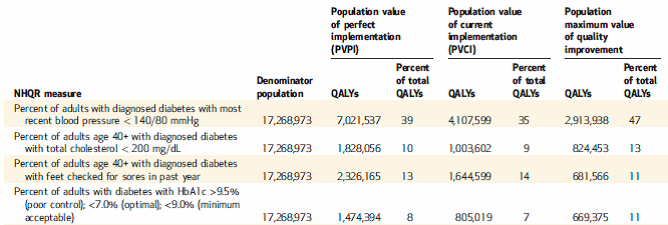Measuring healthcare quality has become a veritable cottage industry. Quality measures are proliferating so quickly that the Department of Health and Human Services has created a, and I’m not making this up, “Quality Measures Clearinghouse”. At last count, it included more than 2100 such measures.
When it comes to health care quality, if you measure everything, you measure nothing. After all, the point of such measures is to provide data which can be used to track healthcare quality, and perhaps even incentivize hospitals to improve quality. If hospitals are graded on too wide an array of measures, they won’t know what to focus their attention on to improve their quality.
David Meltzer and Jeanette Chung published an article in Health Affairs this January, with a framework for how to prioritize quality measures, to focus on the ones that have the biggest impact on health. They use a measure of health benefits that health economists call a quality adjusted life year or QALY. They looked at the amount of benefit that the population would receive if the quality of healthcare improved from current standards to perfect quality, and did so across 13 health quality measures. They found that measuring some aspects of healthcare quality would have little impact on overall health. For example, a hospital could be assessed to see whether people with congestive heart failure are given certain types of medications when they leave the hospital – medicines like Ace inhibitors. Across the 13 measures, however, improving performance on this particular measure would have contributed only 0.2% of the total improvement in overall health. In other words, not much point in measuring this since patients won’t benefit very much.
By contrast, 4 of the measures, if they led to improvements in health care delivery, would have contributed 82% of the total benefits. Here is a partial reproduction of a table from their article, showing what these four measures are, and just how much patients would stand to benefit from them:

This is an important kind of analysis. We need to focus our quality improvement efforts on those areas of medical care where patients stand to gain the most if we improve the quality of that care.
(Click here to view comments)
